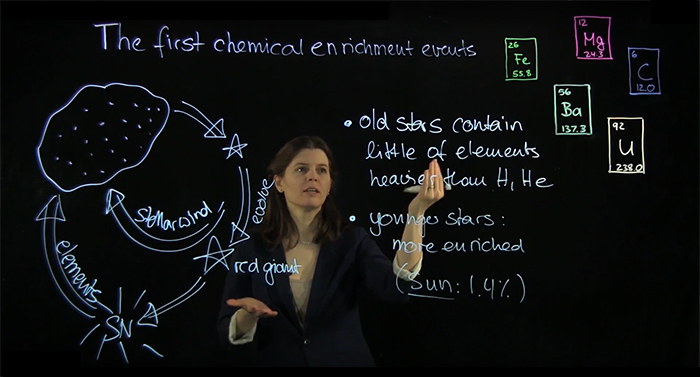
In Episode 4, Professor Frebel describes how the old stars formed from gas enriched by only one or few supernovae and younger stars, like the sun, formed from gas enriched by perhaps a thousand events.
Anna Frebel, Associate Professor of Physics at MIT, studies the chemical and physical conditions of the early universe. Often she is asked what her work is all about and what an astronomer does when using a telescope. She addresses these questions at length in her popular science book Searching for the Oldest Stars*. But at some point, she decided it would be fun to make bite-sized explanations of the key topics that people could watch independently or as a supplement to the book.
The result is this eleven-episode series of brief videos, shot over the course of two days at MIT. Professor Frebel uses a lightboard** because it allows her to address her viewers directly, unlike a traditional blackboard which forces the instructor to turn his or her back to the audience while writing on the board.
Whether or not you already have any prior knowledge of astronomy, and whatever your age and background, Professor Frebel hopes these videos will help you understand her passion for old stars and space science and will inspire you to learn more about our beautiful universe.
* Frebel, Anna. Searching for the Oldest Stars: Ancient Relics from the Early Universe. Princeton University Press, 2019. ISBN: 9780691165066.
** The technology used in the MIT lightboard flips the video image left-to-right so that the words written on the board appear correctly rather than being reversed as would ordinarily be the case with writing seen through glass.








